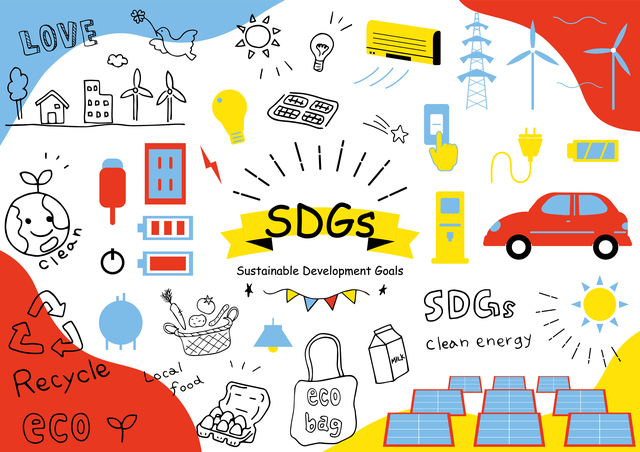
The global movement to reduce plastic, including SDGs, is gaining momentum. On June 30th, Japan Life announced its goal of ‘Zero Plastic Clear Files,’ sparking discussions.
In response to this press release, various impacts have emerged, such as sudden halts in orders for printed clear files from companies that had been producing them, and a sudden surge in interest in paper-based files.
The Ministry of the Environment is aiming to transition to renewable resources such as biomass plastics, CNF (cellulose nanofibers), and paper as alternatives to plastics. It’s undeniable that the country is moving towards a plastic-free policy.
Now, our company also offers various plastic-free alternative material products such as ringless calendars, paper clips, and paper-based files. However, it’s worth noting that the OPP bags commonly used as individual packaging materials for these products are also made from plastic materials.
In our company, we have decided to use ‘cellophane envelopes’ as an alternative product for this purpose.
This time, I’d like to introduce OPP and cellophane envelopes from an environmental perspective.
What exactly is OPP?
OPP stands for ‘Oriented Polypropylene,’ which is the abbreviation for the material’s name.
An OPP bag is a bag made from this material. OPP is durable, highly transparent, and has good printing compatibility, making it suitable for various everyday bags.
Due to its low price, it is widely used worldwide as a cost-effective bag with excellent cost performance.
However, it’s still plastic
The origin of the term OPP, polypropylene, is a type of plastic.
Polypropylene is generally disposed of by combustion, but even when burned, it generally does not emit harmful substances or unpleasant odors. However, its combustion calorie is relatively high compared to paper and other materials.
While it would be ideal if all could be incinerated, in reality, only about 12% of discarded plastic worldwide is actually incinerated, and in Japan, the figure remains at 67%.
Furthermore, while theoretically it’s possible to recycle transparent plastics back into their original form, in practice, it’s considered challenging. Moreover, due to the associated costs, recycling is often bypassed in favor of new manufacturing.
Plastic does not decompose
Plastic’s durability means that when it becomes waste, it becomes a complete disadvantage.
When exposed to sunlight, it degrades and breaks down, becoming worn out. However, these worn-out pieces eventually break down into microplastics, which can persist in the ocean for a long time.
Those that are buried are even worse, as they are shielded from sunlight underground and can persist indefinitely.
From the above, it is evident that reducing the environmental burden as long as plastic materials are used is quite challenging.
One solution is biodegradation
The problem with plastic arises because it does not biodegrade. Therefore, the solution would be to replace it with materials that are biodegradable.
Biodegradation refers to the process of breaking down naturally in the environment, converting into water and carbon dioxide, among other substances. Biomass plastics are referred to as plastics with this biodegradability, but the reality seems to be a bit more complex.
In fact, biomass plastics are also difficult to decompose
Biomass plastics are often made from a material called PLA, which typically requires temperatures above 50°C to decompose. Therefore, while it may decompose in composting environments that measure biomass, it may not degrade in actual marine environments.
Therefore, amid various information, there is a certain number of people who view biomass plastics as a fraud.
Is there no material with higher biodegradability and transparency like OPP? In this context, we have rediscovered a biodegradable material different from biomass plastics.
That material is cellophane.
The material known as cellophane
I believe everyone has touched cellophane tape at least once. Cellophane, the material used in that, is mainly made from pulp and is biodegradable.
However, it is highly susceptible to moisture and has lower strength compared to PP, making it inherently difficult to use for envelope-type packaging.
The weaknesses of cellophane and ways to address them
We first tried making prototype bags using only cellophane, but due to its inherent susceptibility to moisture, even a single water droplet would cause wrinkles, rendering it unusable.
Using this for packaging ringless calendars was challenging, so we decided to create a new type of bag using moisture-resistant cellophane specifically for ringless calendars.
Significantly reducing plastic usage compared to OPP
Being lighter than paper envelopes, and fundamentally made of cellophane, these envelopes allow for a significant reduction in plastic usage. (Although it’s not completely zero due to its moisture-resistant type)
The cellophane envelopes are designed in a sleeve-type shape, allowing them to be sealed shut with adhesive.
At first glance, there is hardly any difference from OPP. If moisture-resistant, there are no issues with strength or moisture resistance, making it a practical solution.
While one weakness of paper envelopes was that the contents couldn’t be seen, the creation of transparent and eco-friendly envelopes allows for visibility of the enclosed calendar even when individually packaged, enhancing advertising and promotional effects.
By innovating from individual packaging to align with the SDGs, we’ve created products that meet the criteria
This time, we introduced cellophane envelopes. By making innovations in the materials used for individual packaging, we believe you’ve come to understand how we can further promote the reduction of plastic.
In the future, we plan to further prototype and develop larger types of cellophane envelopes.
We do not completely negate the existing OPP; it still holds advantages in terms of price and delivery time.
If desired, we can also provide envelopes made of 100% cellophane that are not moisture-resistant.
For various novelties and promotional items using cellophane envelopes, please feel free to inquire via our contact form.
